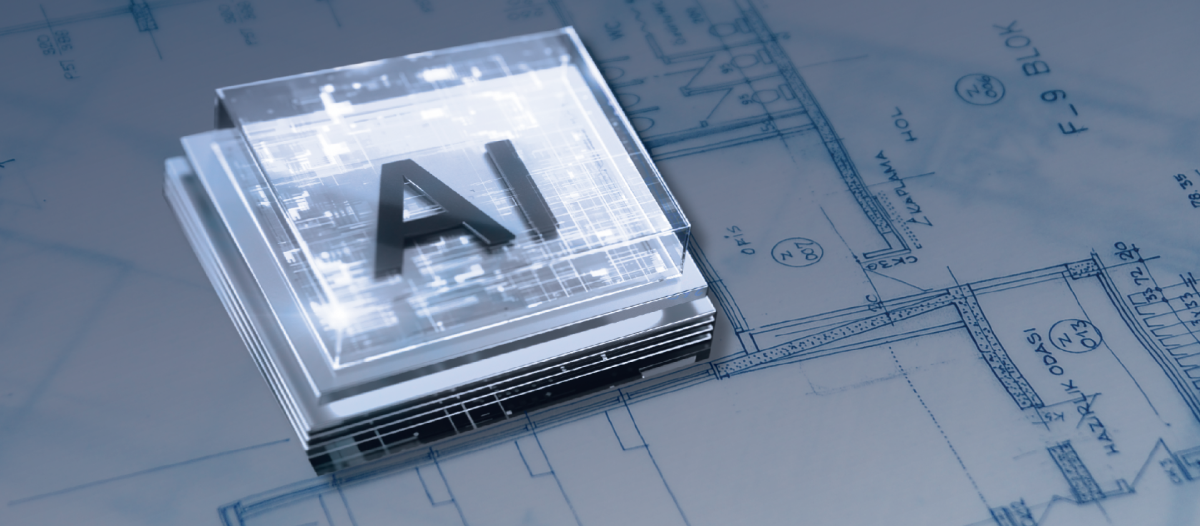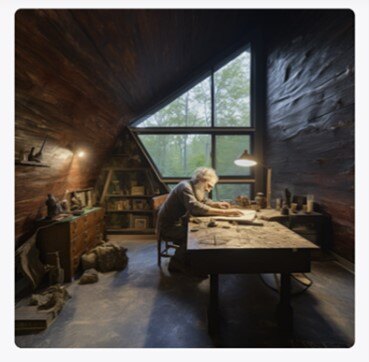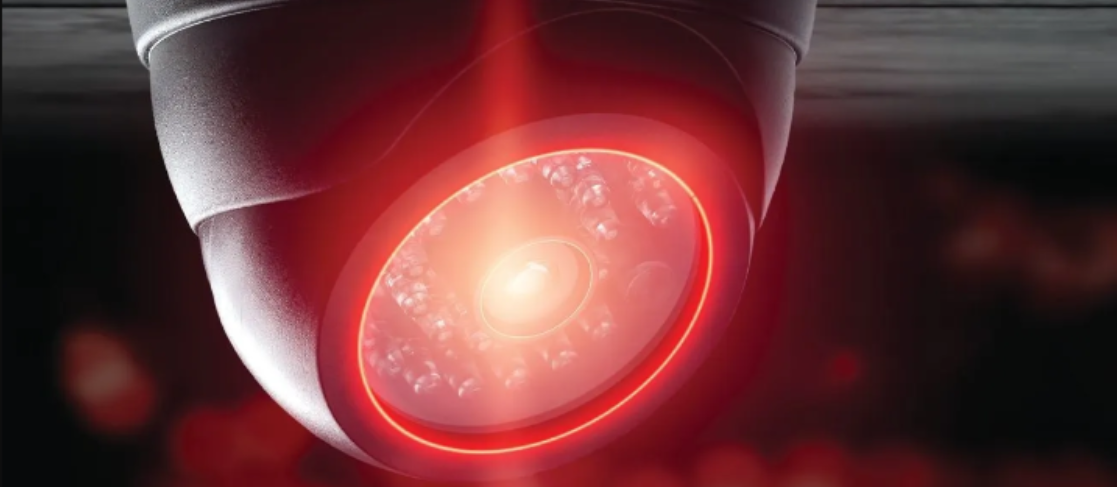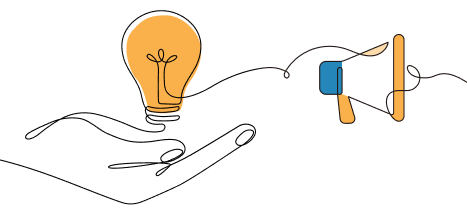The Design Factor
Why architects are still important in FM

To understand how AI can aid in architectural design and FM, it is important to understand the range of tasks these professionals perform. Architects typically divide their tasks into seven design phases:
- Predesign
- Schematic design
- Design development
- Construction documents
- Bidding and negotiations
- Construction administration
- Post-occupancy services
FMs grab the baton at this point in the post-occupancy phase. The core competencies of facility managers are:
- Project management
- Leadership and strategy
- Operation and maintenance
- Finance and business
- Sustainability
- Communication
- Occupancy and human factors
- Performance and quality
- Facility information management and technology management
- Real estate
- Risk management
FM’s work is ongoing throughout the life of the building. Depending on the size and complexity of the facility, multiple managers may be engaged full-time in the execution of the core competencies.
AI
 How can artificial intelligence help FMs at this point? AI, as defined by Matias del Campo in his new book, “Diffusions in Architecture: Artificial Intelligence and Image Generators,” is “the development of computer systems that can perform tasks that typically require human intelligence, such as visual perception, speech recognition, decision-making, and language translation. AI systems use algorithms and machine learning techniques to learn from data and improve their performance over time.”
How can artificial intelligence help FMs at this point? AI, as defined by Matias del Campo in his new book, “Diffusions in Architecture: Artificial Intelligence and Image Generators,” is “the development of computer systems that can perform tasks that typically require human intelligence, such as visual perception, speech recognition, decision-making, and language translation. AI systems use algorithms and machine learning techniques to learn from data and improve their performance over time.”
Today’s most advanced architectural AI software consists of text-to-image generators. Midjourney, the most prominent software, was developed by David Holz, Nat Friedman and Jim Keller (of Apple fame) and a team of researchers and released in July 2022 and boasts more than 18 million users worldwide.
Midjourney translates text prompts into vectors which are numerical representations of the textual descriptions. Images can also be entered into Midjourney where they are converted into a text prompt. Thus, when a user gives the program a prompt, it uses its knowledge to associate the words and phrases with certain visual concepts.” Although difficult to determine, it is estimated that Midjourney’s dataset has approximately 10 billion images.
How Midjourney works by using Images classified as text in its database
There is another category of AI in architecture and FM that is focused on optimization. This AI software serves as an expert consultant advising the architect as to most optimal forms and configurations for efficiency, cost, energy-efficiency, safety and function. Notice that AI does not consult or assist on issues of aesthetic beauty or poetry. Optimization AI can help pack the most cars in a parking lot or configure rooms in a box for efficiency but not necessarily arrive at a good design. It is important to note that AI optimization/design software is in its infancy.
What AI can do
In terms of the phases of design, AI can assist in the schematic design phase by producing thousands of ideation images for the architect. Like a slot machine or a roll of dice, the architect can give prompts to the AI software in the form of words and/or images which then produce a new set of images each time. In this setting the architect is a curator selecting their favorite images and rerolling and or pulling the arm of the slot machine again and again.
The optimization aspect of AI can also assist in schematic design by test “fitting” rooms in a space or cars in a parking lot. Optimization also becomes valuable in design development when specific and subtle nuanced aspects of the design are being tested and refined. For example, how big should the roof overhangs be to shade the windows at 3 p.m.? Thus, current AI has very limited and specific points of interface in architectural design.
Optimization AI software is beginning to assist in FM through systems monitoring, scheduling and control systems. Some AI software claim to boost operational efficiency, optimize energy use, predict maintenance, increase space utilization, democratize data and enhance safety.
What AI cannot do
Even the most optimistic AI experts suggest that AI has the potential to automate up to 37 percent of the tasks typically carried out by architects and engineers. If this is true, not even half of the tasks performed by architects will be automated by AI even in the future. AI is ideal for repetitive tasks, but not tasks that require real ingenuity and creativity. AI is not diplomatic. Human communication skills, conflict resolution, creativity and innovation – things AI will not be able to do for a while - will become increasingly valued and sought-after in all professions, and here it will be no different. And most importantly, architects must be accountable for the safety of their buildings and the public. This cannot be entrusted to machines.
The roles of the architect and FM
Knowing what architects do and what AI can and cannot do, it should be fairly apparent that architects will be needed as long as construction is needed. Ultimately there are five main reasons architects are needed even with AI and all its potential.
- Beauty and poetry
- Individuality and uniqueness
- Aspirations and the unquantifiable
- The absolute need for buildings to be healthy and safe for the public
- The unpredictable nature of construction and day-to-day operations and an architect’s/manager’s ability to react to change and conflict
First, AI can generate images it thinks might be beautiful or desired but only if a person or architect confirms that it is desired and beautiful. More importantly, even if an evocative image is generated, AI cannot tell the builder how to build it. Poetry in all things including architectural space is immeasurable. AI cannot create the poetic and even if it could, it would not understand the emotions it creates.
AI generated images are ultimately a mash-up of the images readily available on the internet. These images are not new or unique; but they are generated by the probability that someone will like them based on user preferences. In other words, these images are created by an algorithm that is dictated by fashion, trends and clicks.
In the predesign phase, architects mine the aspirations and dreams of their clients. Often this involves reading between the lines and going beyond the merely practical, efficient, functional or obvious. Good design is immeasurable and unquantifiable. AI is nothing if not quantifiable and simply a quid pro quo for a laundry list of needs.
Safety is the ultimate responsibility of architects. Architects attend five-six years of school, work for two-three years, and take six difficult tests before they are licensed to

practice architecture. Although some structural and building code aspects of safety can be optimized by AI, the complexity of the lives of people in buildings and their ultimate safety can only be guaranteed by human beings.
Finally, design and building construction is a negotiation with a team of dozens of people. Change and conflict are inevitable. The day-to-day circumstances on a construction site produce a myriad of events and conditions which must be managed by an architect. Often these negotiations rely on experience and personal relationships which cannot be defined by an algorithm.
Conclusion
AI uses and applications in architecture will continue to grow and someday design may be somewhat automated. But even with a future architectural robot which has been tested and improved over time with AI and machine-learning and trained by the most successful human architects, be prepared for pitfalls.
Will an AI bot give FM teams the confidence of managing their facility on a day-to-basis? At best, AI can serve as a consultant or co-pilot to the human providing multiple options and helping to optimize the design and management for efficiencies. However, the architect and FM must have the training, education, experience, diplomacy and creativity to curate and integrate a solution to meet needs and wildest expectations.

References
ifmacdn.azureedge.net/sfcdn/docs/default-source/marketing/pd-pages/11-core-competencies_oct2020.pdf?sfvrsn=2
Del Campo, Diffusions in Architecture: Artificial Intelligence and Image Generators, p. 256.
imaigic.com/blog/how-mj-was-trained#:~:text=It%20works%20by%20destroying%20training,using%20the%20learned%20denoising%20process.
brainboxai.com/en/articles/10-ways-to-leverage-ai-in-facilities-management#:~:text=AI%20can%20save%20the%20day,real%2Dtime%20to%20optimize%20performance.
archdaily.com/1007802/will-artificial-intelligence-replace-architects
forbes.com/sites/bernardmarr/2024/03/15/how-generative-ai-will-change-the-jobs-of-architects-and-civil-engineers/?sh=22835ab3572d
illustrarch.com/artificial-intelligence/26336-how-to-create-architecture-plan-with-artificial-intelligence.html
Artificial. Intelligent. Architecture, edited by Frank Jacobis and Brian Kelly.
Diffusions in Architecture: Artificial Intelligence and Image Generators, edited by Matias Del Campo.
“How Generative AI Will Change The Jobs Of Architects And Civil Engineers,” by Bernard Marr, March 15, 2024, Forbes.com.
“Will Artificial Intelligence Replace Architects?,” by Dioga Simoes, October 18, 2023, Archdaily.com.
“Will architects really lose their jobs to AI?,” by Nat Barker, July 27, 2023, Dezeen.com.
“Will AI Replace Architects?,” by Pedro J. Lopez, April 24, 2023, Render4Tomorrow.com.
“Architects replaced by machines? Why AI is set to radically affect practice,” by Merlin Fulcher, January 23, 2023, architectsjounal.co.uk
“Will AI Replace Architects?,” by Elif Ayse Fidanci, February 1, 2023, illustrarch.com.
Read more on Operations & Maintenance and Project Management
Explore All FMJ Topics








